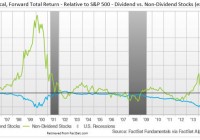ALPS Adds New Twist To Equal-Weighted ETF Products
By DailyAlts Staff ALPS Holdings has been a leader in providing innovative investment products and customized solutions since its founding in 1985. On July 1, the firm added two new products to its repertoire: The ALPS Sector Leaders ETF (NYSEARCA: SLDR ) and the ALPS Sector Low Volatility ETF (NYSEARCA: SLOW ), both of which are equal-sector weighted, to avoid the loss of diversification benefits associated with over- or under-weighting particular sectors. Equal-Weighted Investing One of the major knocks against market capitalization-weighted indexes is that they inherently overweight overvalued stocks, and underweight undervalued stocks. In addition, they have a significant bias toward the largest companies in their respective universe. For instance, if the S&P 500 Index were equal-weighted, Apple would account for just 1/500 of the index’s total, as opposed to the roughly 4% it constitutes on a cap-weighted basis. Smart beta products provide an alternative approach to weighting investments. Most smart beta strategies use “factors” such as value, momentum, quality or low volatility to determine their investment weights, but a simpler approach is to weight all investments within an index or fund equally. Thus, equal weighting ends up avoiding the large-cap, or even mega-cap bias that many capitalization weighted indices have. The ALPS ETF Approach The new ALPS ETFs are part of the ALPS Factor Series. They’re “smart beta” products in that they select investments according to fundamental factors, including growth, quality, and low volatility. But investments held by the ETFs are weighted so that each business sector has equal representation – this mitigates the risk of being overly concentrated in an overheated sector, or being underweight an undervalued sector. “Rather than investing in pure market-cap indexes, which are usually tilted towards specific sectors, our equal sector weighting methodology may provide a better foundation for building diversified portfolios,” said portfolio manager Michael Akins, in a recent statement. “As a result, investors and advisors may achieve better risk adjusted returns.” Both ETFs will track S-Network indexes, which are designed to provide equal-weight exposure of selected investments across sectors and across securities. Both funds exclude REITs, and when evaluating sectors, combine the telecommunications sector with the information technology sector to form a single sector of the two. The ALPS Sector Leaders ETF will track the S-Network Sector Leaders Index – this index picks the 5 stocks from each of nine GICS sectors which, per the prospectus, demonstrate the best growth potential based on key characteristics associated with growth and quality, then equal weights all 45 stocks in the portfolio. The ALPS Sector Low Volatility ETF will track the S-Network Sector Low Volatility Index – this index picks the 5 stocks from each of nine GICS sectors that that have the lowest trailing twelve-month volatility as of the last trading day of November, then equal weights all 45 stocks in the portfolio. “It’s become clear that there’s an important place for the equal sector weighting strategies in most investment portfolios, particularly in volatile markets,” said Mr. Akins, who is also a Senior VP at ALPS Advisors and its Director of ETFs. “We’re excited at the prospect of applying the approach toward these historically proven factors and markets.” The management fee and expense ratio for each fund is 0.40%. For more information, visit alpsfunds.com .

